BLW Basics: How to Make Fritters for Self-Feeding Babies
In this episode we’re talking about fritters and how you can easily incorporate a variety of ingredients into a fritter that baby can self-feed:
- What are the basic ingredients of a fritter? ...including ratios of ingredients and egg substitution ideas if baby is allergic to or the family does not eat eggs
- How to prepare fritters perfectly every time so you never end up with soggy fritters that won’t stick together!
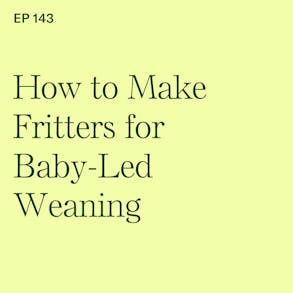
LISTEN TO THIS EPISODE
Episode Description
Fritters are an easy way to help your baby safely eat smaller pieces of food early on in baby-led weaning. You can incorporate cooked whole grains, proteins and various types of cooked vegetables in fritters that your baby can then self-feed. In this episode we’re talking about the components of a basic baby-led weaning fritter recipe as well as substitution ideas if your baby doesn’t eat eggs.
Links from this Episode
- Baby-Led Weaning with Katie Ferraro program with the 100 First Foods™ Daily Meal Plan, join here: https://babyledweaning.co/program
- Baby-Led Weaning for Beginners free online workshop with 100 First Foods™ list to all attendees, register here: https://babyledweaning.co/baby-led-weaning-for-beginners
Bowls
Serve your baby fritters cut into strips about the size of your adult pinky finger. I use the ezpz Tiny Bowl and the ezpz Mini Bowl for trying new BLW foods. You can get 15% off all ezpz products at ezpzfun.com with my code BABYLED (this is my affiliate code).


Avocado Oil
Frying fritters is an easy way to add flavor and fat. I like avocado oil because of its high smoke point, mild flavor profile and unsaturated fatty acid makeup. I use Primal Kitchen avocado oil and you can get 10% off with code FERRARO10 (this is my affiliate code).

Low Sodium BLW Sauce Recipes
If your fritters are dry or crispy they can be a potential choking hazard for your baby. We want to add sauces, dippers or toppers to moisturize foods and increase lubrication in the mouth which in turn reduces choking risk. I have a free download called “5 LOW-SODIUM SAUCES FOR MAKING BLW FOODS SAFER” and you can download it HERE: https://babyledweaning.co/resources/5-blw-sauce-recipes-for-safe-swallowing

Seasoning & Spices for BLW
In this episode we talked about the basic BLW fritter recipe, but don’t be afraid to keep going by adding new flavors, spices and seasonings to your fritter batter. Babies don’t have to eat bland food! I love the low sodium seasoning options from Spice House, especially their Salt Free Spices Deluxe Gift Set which works great for baby-led weaning. You can get 10% off your order of $25 or more with code BLWT10 (this is my affiliate code).


Latest Episodes

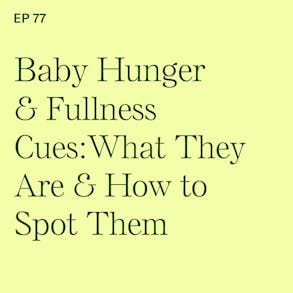
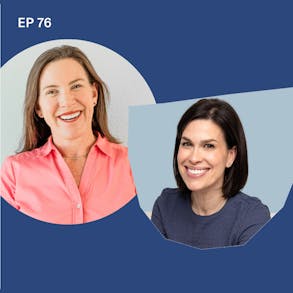
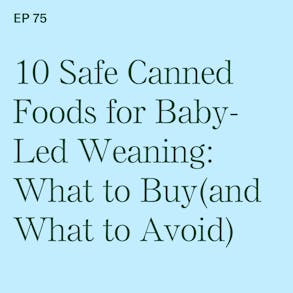
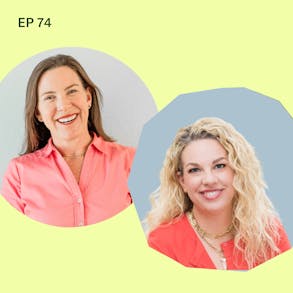
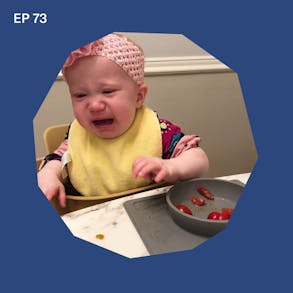
Katie Ferraro (0s):
So the basic ingredients of the fritter. And again, this is totally modifiable, but I'll do one cup of the dry cooked grain, a half a cup of the cooked vegetable doing protein and a half a cup of cooked meat, one egg plus the seasoning. Boom. Put it all together. Fry it. Perfect for baby led weaning. Hey there I'm Katie Ferraro, registered dietician, college nutrition professor and mom of seven specializing in baby led weaning here on the baby led weaning made easy podcast. I help you strip out all of the noise and nonsense about feeding, leaving you with the competence and knowledge you need to give your baby a safe start to solid foods using baby led weaning.
Katie Ferraro (42s):
Well, hey guys welcome back. Today, we're talking about fritters. So fritters are little fried cakes or patties that you can make foods that are otherwise like impossible for early eaters to eat. You can make them into a fried form that you can then cut into strips, that baby led weaning babies can pick up, scoop up with their whole hand grasp before they have their pincer grasp and feed to themselves. So I wanted to go through just the basics of what a fritter is. How you make a fritter? Cause you guys are always asking me about fritters and rightly so, because I teach about whole grains and in my hundred first foods list, there's 20 different starchy foods, including a bunch of whole grains that are really small little pieces that we know babies can't pick up on their own.
Katie Ferraro (1m 27s):
And we don't want parents to say, oh my baby, can't pick up quinoa at six or seven months of age or even eight months if they haven't gotten their pincer grasp yet. So I'm just going to go back to feeding them like refined white carbohydrates, starchy foods. That's not what we want to happen. We want you to be able to feed those whole grain foods. And if you don't have my list of the hundred first foods yet, I give it away for free to everybody on my weekly workshops. The workshop is called Baby Led Weaning for Beginners. It's all about how to get your baby to eat 100 different foods before turning one, without you having to spoon-feed purees or buy pouches. And everyone on that free workshop gets a copy of the a hundred first foods list. The hundred first foods are divided into five different categories.
Katie Ferraro (2m 8s):
So there's 20 fruits, 20 vegetables, 20 starchy foods, 20 protein foods, and then 20 challenge category foods. Inside of the workshop, I explained the foods that are in the challenge category and how to put these together in unison in my five step feeding framework. So you're introducing your baby to five new foods a week. But the starchy foods, those whole grain foods, parents always get tied up on them. They're like, Katie, what do I do with freekeh or quinoa or sorghum? And the answer is if you have cooked grains, you can easily make a fritter. So I want to share the basics of baby led weaning fritters with you today here in this episode. All right. So just to make sure we're all on the same page here, what is a fritter?
Katie Ferraro (2m 51s):
Okay. A fritter is a thing you fry. I'd like to think of it as like the size of a golf ball and you smash it down flat and you make a little pancake or a patty or a fried cake. But for the sake of this episode, let's just call them fritters and you fry them. Sometimes parents are like, wait a minute. Babies can eat fried food. Yes, absolutely. One of the benefits of frying foods in oil is that we're adding additional fat. So babies are still getting most of their nutrition from breast milk or formula early on in baby led weaning, but the fat or the oil that we fry the fritter in, that's a way to add some great mouth feel for your babies. Like, fat feels really good on your tongue. As you're learning how to eat, even when you know how to eat.
Katie Ferraro (3m 31s):
We also add some extra calories, which down the road matters when they're getting more nutrition from food and less from milk, but it also provides a valuable nutrient fat, which are babies' need for their still developing brains. So yes, we fry the fritters in fat. I'm going to go through each of the ingredients might as well start with fat. People always say, you know, what sort of oil works best for baby led weaning? The answer is. Whatever type of oil your family uses, right? One of the best benefits of baby led weaning is being able to use the same foods the rest of the family eats. So I know personally in our house, we use olive oil, canola oil, peanut oil, but I particularly love avocado oil for baby led weaning. And the reason why is because avocado oil has a really high smoke point.
Katie Ferraro (4m 12s):
Meaning, it's not going to get accurate. It's not going to burn when you heat it really high, which is what you need to do in order to effectively fry a fritter. So I use a type of avocado oil. You can use whatever you can get your hands on. I'm in the United States. I like to not go to the store. So I order mine online from Primal Kitchen. I am an affiliate for Primal Kitchen. I have an affiliate code. If you want to check them out. 10% off anything at Primal Kitchen with the code Ferraro10. The avocado oil is awesome though. High smoke point, mild flavor profile. And it's got nice profiled, unsaturated fatty acids. Those are the heart healthy fats. We just want to get in the habit of feeding our families, those foods early on. So I like avocado oil, but you can use whatever oil you have on hand.
Katie Ferraro (4m 54s):
So that's ingredient number one, the fat. So let's get to the base of the fritter. And I like to think of the base of the fritter as being the grain, the whole grain. This is an opportunity to put, and otherwise hard to feed food, like a cooked whole grain into a format that your baby can feed. And I like fritters to have a base of a whole grain. So I'm talking about quinoa or sorghum or millet or any of the other whole grains on the a hundred first foods list. The key with the whole grains is first. You need to cook them. So they're pre cooked, right? And this is a good thing to do with like leftover whole grains. If you made something for your family, like a farro salad, I don't feed babies salad for the most part because there's raw vegetables in there and we don't feed any raw, crunchy crispy foods to babies.
Katie Ferraro (5m 35s):
But let's say you've got some farro on hand. What's farro? It's like an Italian rice basically, but it's a whole grain and it's cooked. Okay. And cook it without broth or salt, because we really want to minimize the sodium for babies. And when you cook your whole grain, you have to have dry whole grains. Soggy or soupy or wet whole grains are like torture to your fritter recipe. Everything's going to fall apart if the not dry. So if you ever heard that recommendation, like if you're making fried rice nice that you use day old or two-day older, some cases a week old rice. It's all dried out, right? You put it in your fridge. The fridge is kind of desiccant, sucks all of the moisture out of the grain, the rice, whatever it is. And you've got nice dry whole grains that works great for your fritter base.
Katie Ferraro (6m 17s):
Sometimes my don't have my act together to like make the whole grain ahead of time. So one thing you can do, I have a salad spinner and I salad spin the heck out of the drains when they're done cooking to make sure there's absolutely no moisture on them. You can kind of lay it out on paper towels, let them air dry for a little bit, but just stay away from soggy, whole grains. They gotta be dry to make an excellent fritter. All right. So you've got your fat. Now you've got your whole grain base. I'll talk about ratios at the end. The other thing I always put in a fritter, cause why not, is a vegetable, whatever kind of cooked vegetable I've got lying around. It will go great in a fritter. A couple of them you can do raw. So I'll do like for example, brussel sprouts. If I shave them really thin when I fry them that heating component of the fat in the oil, in the heat from the pan, that's all going to cook the brussel sprout.
Katie Ferraro (7m 1s):
So it's soft enough for the baby to eat. But again, we want to avoid raw, crunchy, crispy, hard vegetables. So if you have some broccoli, let's say you guys had the other night and it's leftover, chop it up real small. Or if you have a, the food processor, you are like primed for fritter success because everything can just go in the food processor, and you mix it all up and it's fritter batter ready to go. So you can do some cooked vegetable or leftover vegetable, but I love to put it in a fritter. Another good advantage to fritters is that you can also use them to incorporate cooked protein foods like meat. And I know a lot of you struggle with how to feed your baby meat safely. If you've got some cooked meat, you can cut it up really small. You can put it in the food processor and get it really small and then add it to your fritter batter.
Katie Ferraro (7m 42s):
So I've got a lot of leftover Turkey right now, roasted the whole Turkey. I love to do Turkey when it's not Thanksgiving. I feel like people only eat Turkey on Thanksgiving. It's a travesty. It's the dark meat that is always safer for babies. So legs, wings, thighs, because there's more fat in there. Chop it up real small and throw it in your fritter batter. If you want to, you can make it vegetarian fritters that don't have meat in them, if you prefer. But the last ingredient that's so important is the binding agent. What is the thing that's going to keep all the fritter batter together. And the answer is in my standard fritter batter recipe. It's an egg. And I'll talk about what you do if you don't eat eggs in a second, but basically you add the egg, both the egg white and the egg yolk, the whole thing, into the fritter batter with the dry grain, with a bit of vegetable, with the meat, if you're adding it.
Katie Ferraro (8m 26s):
And mix it all up and the egg is kind of the moisture that makes the batter stick together. And then when you fry that fritter, take the moist batter. It's moist not because you have wet grains, right? It's moist because you put an egg and you scoop out a size about the size of a golf ball and you put some oil in your pan and you get it till it's shimmering. Okay. It's starting to spit a little bit. Keep your baby away from the frying oil. You put the golf ball, sized fritter batter into the pan. And I usually flatten it with the back of a spatula. So it's like a tiny pancake that maybe it's about the size of the palm of my hand. Hey, and then I'll fry that for a few minutes on each side until it's brown. The key is you want to make sure that the egg is set and the egg is cooked, right? Cause we don't want to feed raw or undercooked egg product to our baby.
Katie Ferraro (9m 8s):
So the protein in the raw egg white that's in your fritter batter, when it comes into contact with the hot oil in the pan, that protein coagulates, and it cooks. And it solidifies and kind of holds all the pieces of the fritter batter together. You flip your fritter, make sure it's brown cooked on both sides and you take it off of the pan, put it on a plate, maybe lined with paper towels to soak up a little bit of the oil, if you care. You don't have to do that. Okay, you let the fritter cool. Then you cut it into strips about the size of your adult pinky finger put two or three strips of that into your baby's bowl. I like the tiny bowls from easy-peasy for trying new foods for my baby. Their mini bowl also works great. The code Katie10 works for 10% off at easypeasyandfun.com.
Katie Ferraro (9m 49s):
If you want to try out some of these bowls, but we don't serve baby's food off of the highchair tray or directly onto the table. We want to serve them these strips of food out of a suction mat or bowl that has a pliable, flexible, bendable rim. Now what if you don't eat eggs? Some parents say, oh, well my baby's egg-free. Why would your baby be egg-free? For two reasons, your baby either has a diagnosed allergy to egg. At which point therapy is don't feed your baby eggs or your family is vegan, meaning that you don't eat any animal foods. So that'd be two reasons why you would want to abstain from or not use an egg in your fritter batter. What can you do in place of an egg? Well, I like to do a chia seed or a flak seed substitute.
Katie Ferraro (10m 31s):
In my experience, chia seed substitute works better. So I'll explain to you how that one works. Basically in a recipe, in place of one egg, you can use a combination of one tablespoon of chia seed combined with three tablespoons of water. You mix that together. I usually use my fork, let it sit for about five or 10 minutes till it gets a little bit congealed, but not like super solid. And then you mix it into the fritter batter. So you would take your grain. You would take your vegetable. You would take the meat, if you have any, and then add that egg substitute, mix it all up really well and then fry it exactly as I described with the egg, just without the egg. The chia seeds substitute works pretty well. Flaxseed works not as well, in my experience, as far as holding everything together, but maybe you guys have a different ratio.
Katie Ferraro (11m 11s):
If you do, let me know what it is. But again, for the chia seed, it's one to three parts. So one tablespoon of chia mixed with three tablespoons of water. Now let's talk about the ratios. Okay? Cause parents are like, yes, I know the basic ingredients, but how much? To be honest, it doesn't really matter. That's one of the beautiful things about baby led weaning, right? Is that like you can kind of wing it when it comes to the recipes. Alright? We're not adding salt to this stuff. We're not adding sugar. Parents will be like, I love your, you know, almond flour mini muffins for baby led weaning. I'm like, no, you don't. Have you actually tasted them? They taste terrible, but babies love them. So the point is you can add salt. I make fritters all the time for baby led weaning for work. And then I'll doctor them up a little bit for the rest of my family that like wants some salt.
Katie Ferraro (11m 53s):
Don't be afraid to season your baby foods. I'll also add any sort of seasoning or spices that I have around the house into the fritter batter. It's a great way. It's a great vehicle for introducing new flavors to your baby. If you guys are interested in spices, the brand that I love and that I work with is called Spice House. They have them the most delicious, amazing array of seasonings. They also have some great salt-free options too. So I have a code for them as well. This is also an affiliate code. The code BLWT10 gets you 10% off a minimum purchase of $25 or more. They have this salt-free spices deluxe gift box that, it's eight jars of like different seasoning blends, but without salt. So it's safe for you to add into the foods that you're going to feed your baby. Cause we don't want to be shy about seasoning our baby's foods. We just want to stay away from doing added salt. So back to the ratios, I generally will do quick rule of thumb from doing a fritter batter, one cup of a cooked dry grain, a half a cup of a cooked vegetable, chopped up, a half a cup of cooked protein or meat fish whatever's laying around, chopped up.
Katie Ferraro (12m 34s):
And then one to two eggs. It depends. I usually start with one. I throw everything in the food processor. I put whatever seasoning I'm doing on top of that. Sometimes the meat was already seasoned or the vegetable were seasoned. If everything kind of bland, I'll put dill there. I'll put turmeric in there. That's best thing about babies. They'll eat anything, mix it all up in the food processor and then kind of gauge like, okay, is it moist enough to like, to not be a dry bread product? Cause we don't want to serve that to babies, but like I don't want it to be super soupy and runny that it's not going to even form into a nice fritter batter. So somewhere between one to two eggs, you kind of got to gauge it yourself. I start with one and I would say usually with like the two cups of ingredients that I just described: a cup of the grain, a half a cup of the vegetable and half a cup of the meat.
Katie Ferraro (13m 20s):
I generally add a second egg. Depends how big your eggs are too though. Right? So, somewhere between one to two eggs. I know you guys like specific recipes, but this one you do just kind of got to play it by ear. Put one to two tablespoons of oil in your pan. Yeah. And again, bigger pan might need some more oil. Okay. Get it nice and hot. Fry it a few minutes each side. The key is to let it cool though. We do not want to burn our little baby's mouth with these fabulous fritters that we are making. And when you get the fritter out there and you cut it up to strips, and you put it on the plate. You might notice, on sometimes, depending upon which ingredients you're using, it might be a little on the dry side. So we do want to make sure we're offering fritters, especially dry protein in dry starch foods with sauces. Sauces, dippers and toppers make baby led weaning foods safer for the baby to eat. But the parents will be like yea, but what kind of sauce? Because if you go to the store and you'll look at the nutrition facts panels of most sauces, they're way too high in sodium to feed the babies.
Katie Ferraro (14m 6s):
So I actually have a free download for you that has five low sodium BLW sauce recipes. And every single recipe in this sauce handout goes great on top of baby led weaning fritters. So inside of this free download, there's five different sauces. I'll tell you real quick what they are, but we have a great Japanese sesame sauce. It's actually called Goma Dare. Caitlin, who's a dietician that helps us here with all the baby led weaning content. She adapted her mom's Goma Dore recipe to make it appropriate for babies to have for baby led weaning. So that's kind of a cool way to introduce sesame too. One of the big eight ounce, number nine allergenic foods. I've got a low sodium marinara sauce in there. So if you're like, you're doing pasta to introduce your baby to wheat.
Katie Ferraro (14m 49s):
And you're like, all right, I want to add something to it. You can't just take a regular sauce off the shelf. Way too much sugar, way too much salt. This is a low sodium, no added sugar, low sodium marinara sauce. I've also got a chimichurri sauce in there. So for those of you that are doing different meats or you're doing maybe like some leftover cuts of beef that you've made safe for your baby to have in a fritter, put some chimichurri on it. We've got an aioli sauce recipe in there. Great for dipping. It was really great with a lot of the protein foods that we're introducing to our babies. As well as, a peanut satay sauce. So again, five free baby led weaning, low sodium sauces available for you. I'll link to them at the show notes for this episode. If you go to blwpodcasts.com/143, that's where you can find the episode here that I'm talking about with the fritter stuff.
Katie Ferraro (15m 30s):
And I'll mention the ratios again. Cause I know it's annoying when you're like listening to a podcast about food and they're mentioning like numbers and ratios and you're like, I'm trying to listen here. I'm not writing this down. It will all be on the show notes for you. Check it out at blwpodcast.com/143. And if you're on Instagram, tag me in your pictures at baby led weaning team of the fabulous baby led weaning fritters that you're making for your baby and let us know what ingredients you're putting in your BLW fritters. Thanks so much for listening guys. I'll see you next time.
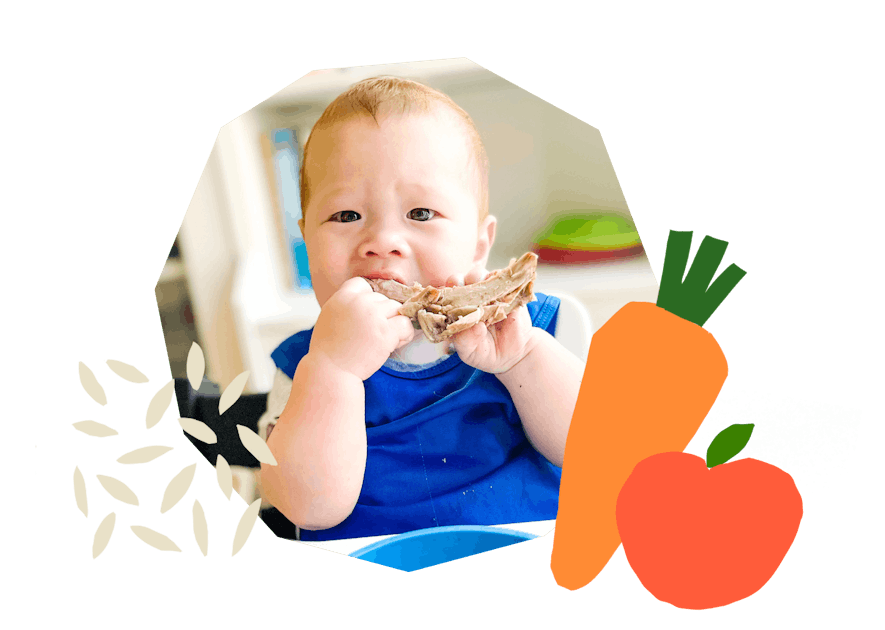
The Program Baby-Led Weaning with Katie Ferraro
A step-by-step digital program for starting solid foods safely and navigating the original 100 FIRST FOODS™ meal plan with baby-led weaning.
 EXPERT-LED, PROVEN APPROACH TO EATING REAL FOOD
EXPERT-LED, PROVEN APPROACH TO EATING REAL FOOD CONCISE VIDEO TRAININGS TO MASTER BABY-LED WEANING
CONCISE VIDEO TRAININGS TO MASTER BABY-LED WEANING 100 FIRST FOODS DAILY MEAL PLAN WITH FOOD PREP VIDEOS
100 FIRST FOODS DAILY MEAL PLAN WITH FOOD PREP VIDEOS
Baby-Led Weaning for Beginners Free Workshop
Is your baby ready to start solid foods, but you’re not sure where to start? Get ready to give your baby a solid foundation to a lifetime of loving real food…even if you’re feeling overwhelmed or confused about this next stage of infant feeding.
Get baby-led weaning recipes and tips delivered to your email inbox.

